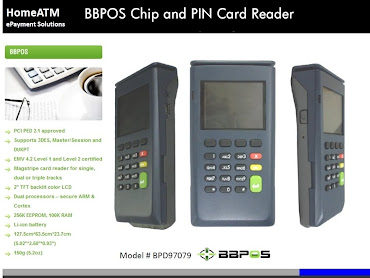By Dale Buss - Forbes
Transacting business seamlessly over the internet means having a decent grasp of how things work, and more importantly, why they don't. That's why, with help form the smart folks at technology publisher O'Reilly Media, we've assembled a glossary of e-commerce-related tech terms that every entrepreneur should know.
Some of that gobbledygook is the province of tech jocks. However, if entrepreneurs want to achieve operational excellence while keeping technology investment in check, they have to be able to at least speak the language. And you don't have to know how to get down and dirty with computer code to understand the implications these issues have on strategy and budgeting.
Online retailers, for example, are trying to move beyond what has become the conventional, rather static consumer experience. One solution: real-time, individualized pricing. A new system, developed by uBee, allows merchants to "sense" what items a shopper is looking for on their websites, and spits out a custom price based on inventory levels and other particulars.
"That," says uBee CEO Bill Carpenter, "can give you personalization between buyer and seller."
The e-commerce platform that UBee plans to launch next month will rely on SOAP, for Simple Object Access Protocol, a technology standard based on using "envelopes" that retailers and uBee use to exchange information quickly enough to make these real-time offers. The "documents" in these envelopes invariably are written in XML, the most common software language in e-commerce, including variants such as XML-RPC and XML Business Reporting Language. (The acronyms are dizzying at first, but you get used to them.)
For all the billions of dollars being spent and collected online, the code at the core of e-commerce remains highly fragmented — and that creates communication breakdowns within the overall system.
"The Internet is still the wild, wild west," said Clint Page, chief executive of Dotster, a Vancouver, Wash.-based provider of Internet-business services. "It's not like more-developed parts of business and commerce where you get standardized platforms."
Take setting up a merchant account with a bank so that you can accept and process online payments. While bricks-and-mortar retailers only have to decide whether to accept checks and major credit cards, e-commerce is open to all sorts of other payment possibilities and transactions in currencies other than the dollar, such as HomeATM's PIN Debit/Credit Platform.
You'll also want to know a thing or two about affiliate programs. Under these advertising arrangements, companies collect cash for driving traffic to your site, and visa versa.
With Google now as much a verb as a company name, search engine optimization (or SEO) — the process of increasing a site's odds of ranking high in the search stacks — is a key consideration for any e-commerce player.
Says Dotster's page: "There is ferocious competition to be on the first two or three pages of each search." Editor's Note: Do a Google Search on PIN Debit.
Then there's the problem of security. While millions of consumers have grown comfortable with entering credit-card information into a Web site, reports of massive identity theft continue to crimp online sales. Editor's Note: Consumers should NOT be comfortable entering their credit/debit card information into a Website.
The lines of defense begin with authentication programs that determine whether someone signing on under a specific name is actually authorized to use the site via that specific account. Editor's Note: Dually Authenticated HomeATM PIN based transactions allow consumers to swipe their card (eliminating the risk and conveniently saving them from typing their card numbers onto a website). Entering the PIN (non-keystroke) makes for a highly (dual) secured transaction. Force users to jump through too many hoops, though, and you risk driving them away. Hence the single sign-on approach, in which either the user's computer or the website "remembers" passwords. Access control beefs up the barricades by granting entry only to specific site functions, such as adding an item to a shopping cart.
Want to make it clear that your site is indeed secure? Use software that adds a padlock icon in the user's browser window. Editor's Note: Or use HomeATM's globally patented PIN based checkout system!
"Ensuring that your checkout process and, more important, the credit card form are well-secured will guarantee your customers feel safe when transmitting their information," says Pat Kaeowichien, director of information technology for Magnetic, a Tampa-based Web-development firm.
Credit card firms have taken critical steps to fend off identify thieves, too. In 2006 a consortium including Visa, MasterCard, American Express and Discover helped devise the PCI/DDS standard for providing secure communication for transactions over the Internet.
"This standard is now in place for all merchants globally who accept credit cards — no exceptions," says Bill Bradley, senior industry marketing manager for Akamai Technologies in Cambridge, Mass. "Non-compliance can mean fines and, for that retailer, a loss of public trust. And that's the main reason people don't buy online in the first place." Editor's Note: Ironically, PCI DSS was initially designed for bricks and mortar retail locations, there is no specific WPCI (Web Payments Card Industry) standard...
Keeping them buying: That's what understanding e-commerce — and the technology that drives it — is all about. Editor's Note: Keep them buying securely, that's what HomeATM's technology is all about!









0 comments